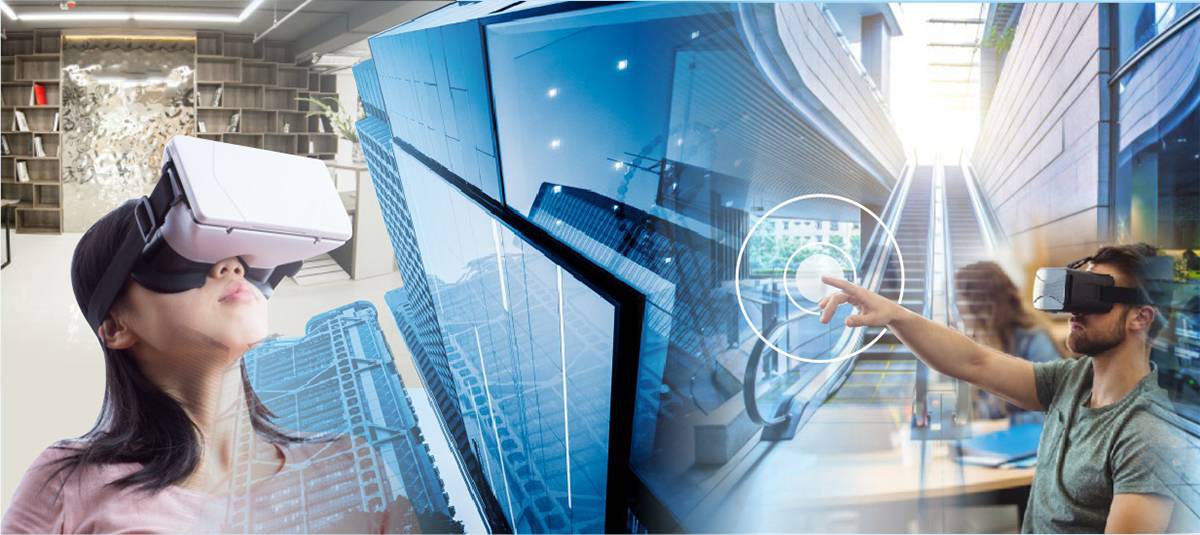If you’ve bought or sold a property in 2020 or 2021, then you know how the real estate industry works these days. There’s a game-changer technology that is changing the way this sector works. And that is Virtual Reality (VR). Virtual Reality for real estate can help agents grow their business, strengthen their clientele and deliver top-class services. According to a survey by the National Association of Realtors, 44% of clients search for properties on the internet first. Therefore, it is important to adopt Virtual Reality Real Estate Solutions and Augmented Reality Real Estate applications today as it makes it easy for people to get a sense of what a home is really like without traveling there to see it in person. This is a popular topic now due to COVID-19 but most analysts and real estate pundits believe that this tech is here to stay.
What You Need To Know
As most buyers search for homes online, no matter which path the buyer chooses, the result is the same where the buyer and the agent get in their cars, drive to the home, and walk through it. Any homebuyer will say that walking through a home is a much different feeling than seeing pictures online. Real estate agents take pictures of homes in angles that hide the flaws. However, when you walk through the house in person, you see all of it. Sometimes, they look completely different from the photos online.
But, the problem with this method of personally traveling to the location of the home is time-consuming, especially when someone is already living in the home and the agent has to work out a mutually agreeable time when the buyer can walk through the property. To solve this issue, Real Estate App Development has come into existence. Some smart engineers have made it possible to virtually tour homes. Research has forecasted about 26 million units of both AR and VR headsets will be sold by 2023. Oculus Quest and HTC Vive are the most popular VR headsets. Google Cardboard and Samsung Galaxy VR allow even phones to get into action.
The Trend and Influence of VR
Nowadays, people don’t feel safe going to someone else’s home. But, that doesn’t mean that people have stopped wanting to move. These virtual reality real estate solutions have come in handy for people wanting to browse homes safely. They can put on a headset and tour them at their own convenience. Virtual Reality for Real Estate has the potential to transform the way people shop for homes and how agents list them.
Advancements in real estate app development company allow you to choose to see homes in virtual reality. The real estate agent captures 3D video and image data necessary to create the immersive experience. Once that’s done, the agent can then virtually stage the house. The prospective buyer can then view the house using their VR headset at home or the agent’s office. If the software is high-end, the buyer can even replace the staged furniture with the ones that match the decor better. This makes the entire home-buying process faster, easier, more efficient for both parties, and safer. However, AR solutions in real estate applications have also created a buzz in the industry.
How is AR Different Than VR?
Augmented Reality has some of the same concepts as Virtual Reality for real estate but a slightly different approach. In VR, the computer or phone renders everything in the virtual world. By contrast, augmented reality inserts 3D renderings into the real-world background. Have you ever used a shopping app that helps you to see how something would look in your space? That’s an AR experience. The greatest advantage of AR solutions is that it works with any device. You can load any 3D model on a real-world backdrop. Consider this case where a client is trying to stage their furniture in an open house.
They can load an AR app on their phone and using the phone’s camera, they can place virtual objects in the space to understand its looks. AR is very precise and buyers can have confidence that their furniture will fit. A buyer can simply even go to the empty house and load up an AR app. The app has various furniture pieces loaded on it. The buyer can walk through the home, placing those furniture pieces in the space. Let’s suppose that an AR real estate app has a connection to some e-commerce sites. The buyer can put in their offer, and once it’s accepted, the app could send purchase requests to these e-commerce sites. Once the deal is closed, the buyer can have the furniture shipped to their new home and set it up to look exactly as their saw on their phone in AR!
Wrapping Up
AR and VR are both very powerful tools in the real estate industry and are here to stay. Buyers and sellers love the ability to sit in their own space and tour new homes in 3D and even see how their furniture will look in their new home. For sellers, it’s a boon too, as it cuts down staging costs and makes listing homes simpler. There’s no limit on the number of people sitting in the comfort of their own home and putting their headset on to walk through their new home. Virtual Reality Real Estate solutions and AR solutions with real estate applications can create immersive and sophisticated experiences for both buyers and agents. Real Estate App Development services provide such apps specially curated for agencies. These technologies will go on to become even bigger and will transform countless other industries and not just the real estate industry.
Do write for us health and fitness if you can guide people in the best ways in what manners they can stay healthy









